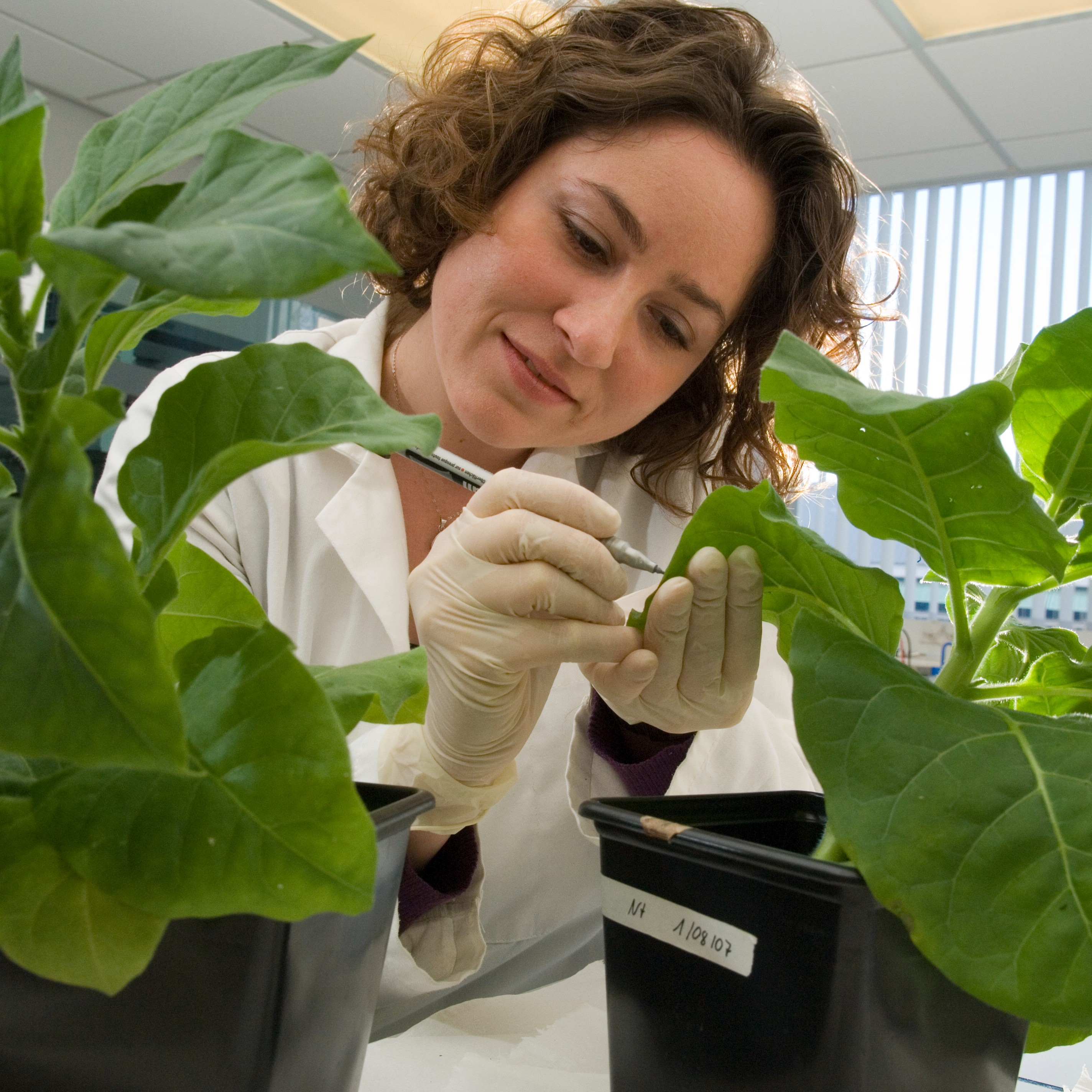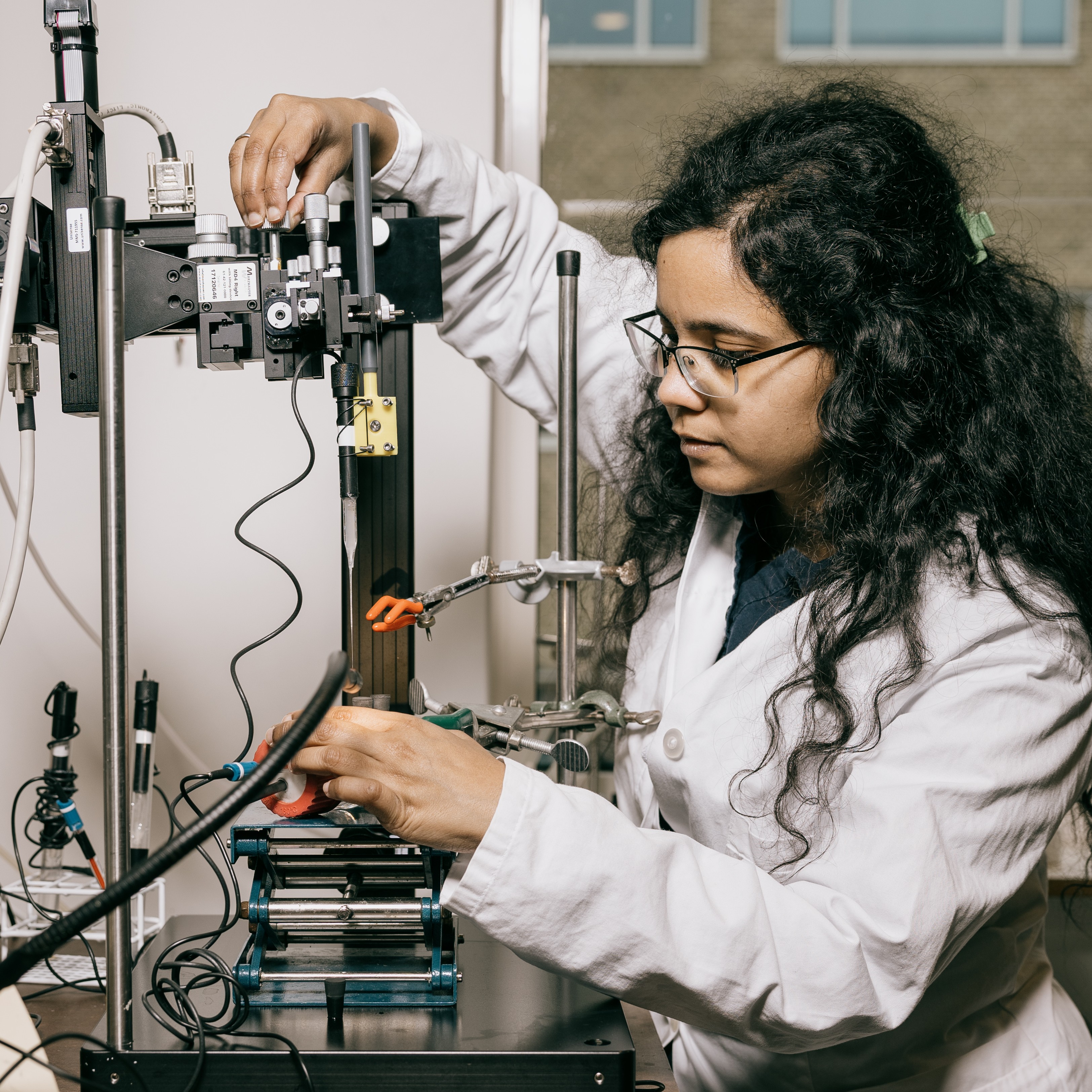Garden Grants: Greenhouse Gas Removal
Homeworld Collective is funding ambitious, early-stage projects at the intersection of biotechnology and greenhouse gas removal. Grant amounts will range from $50k - $150k.
Read more: Proposal Guidelines and Template
Applications closed.
Submitted Projects
61
Total Funding
$1,441,209
Submission Deadline
Feb 28, 2025
About This Grant
Biotechnology is a high-growth area that has significant potential for greenhouse gas removal. Homeworld Collective identified that risk-tolerant funding and interaction between teams have been limiting factors to the deployment of this new approach to sustainability challenges.
The Garden Grants program facilitates learning and collaboration by publicly discussing important problems for climate while protecting applicants’ novel approaches.
Proposals to Homeworld Garden Grants have two main sections: the problem statement (3,000 characters) and the solution statement (10,000 characters). The Proposal Guidelines and Template document provides detailed instructions for completing your applicaiton.
Proposals may address problems identified by applicants, or pre-written problems originating from our Problem Statement Repository.
Funded Projects
12
Low Cost Sensors for Soil Methane Uptake
Affordable methane sensors capable of measuring concentrations around atmospheric level are a crucial tool...
Biomapping of Tree-based Atmospheric Methane Removal (TAMR) for Technological Development
Tree surfaces can be an effective approach for AMR, although foundational information is lacking. Here...
Compound I-based design of methane monooxygenases
Building upon previous work showing that compound I from cytochome P450 monooxygenase can oxidize methane...
Continuous siderophore-mediated olivine weathering
We propose that bacterial siderophores could accelerate mineral weathering reactors as an additive. Our...
Enhancing Carbon Sequestration By Improving Photosynthetic Efficiency
Enhancing photosynthesis can help mitigate greenhouse gases, but plants and algae use only visible light...
Profiling in vivo pMMO activity and lipid order in methanotrophs using designed fluorescent biosensors
Remediating methane requires the uniquely potent enzyme methane monooxygenase (MMO). All attempts to express...
Coupling of microbial carbon capture and utilization (microCCU) and direct air capture (DAC)
Reducing atmospheric CO2 is critical to mitigating climate change, and negative emission technologies (NETs...
Highly-sensitive, real-time enzyme methane oxidation rate measurements using an electrochemical assay
A low-cost, rapid, and highly sensitive assay is needed to measure methane gas oxidation rates by methane...
Lithogardens: lithoautotrophy-powered microbial communities for improved carbon capture with enhanced rock weathering
By 2050, the process of enhanced rock weathering can be capturing 0.3 Gt CO2/yr in the US alone [1], but...
Worms at Work: Scoping Natural Carbon Sequestration at Scale
For centuries, scientists noted earthworms' exploits as ecosystem engineers. Recent research shows the feasibility...
Which methanotrophs drive methane degradation in the phyllosphere of trees?
Methane (CH4) accounts for ~30% of climate forcing and atmospheric methane removal (AMR) has significant...
Underground solutions for aboveground climate challenges: leveraging subterranean microbial processes for GHG removal
Caves are known to function as massive sink of atmospheric methane. However, the potential for artificial...
Submitted Projects
40
sMMOptimized: Engineering Streamlined Methane Biocatalysts
Methane’s climate impact necessitates scalable biocatalysts for oxidation at low concentrations. sMMO offers...
Enzyme Engineering for Scalable, Carbon Negative Plastics
Gigaton-scale CO2 removal can be achieved by developing carbon-negative sources for everyday plastics. To...
Getting Out of the Tank: Bridging Enzymatic Activity to Open Air Catalysis
Atmospheric methane is a GHG with 84x more warming potential than CO2. While chemical engineers struggle...
Improving biological methane oxidation rate for atmospheric methane removal
CH4 accounts for ~ 40% of greenhouse gases’ contribution to short-term global warming, making it an attractive...
Derisking Bioreactors for Atmospheric methane Removal: A Techno-Economic Framework
To de-risk atmospheric methane removal (AMR) bioreactors, we will develop a techno-economic framework to...
Harnessing the Bark Side of the Methane Cycle: A Natural Climate Solution
Trees play a vital role in sequestering atmospheric carbon. Barks contain diverse microbes that mediate...
Accelerated plant rubisco evolution
All biological carbon fixation is gated by the enzyme rubisco, which has become suboptimal as CO2 levels...
Genetic Tools for Particulate Methane Monooxygenase Expression in Native and Heterologous Hosts
Genetic tools that enable the transversal of methanotroph pMMO expression plasmids through E. coli are needed...
Engineer efficient water-soluble methane monooxygenase particulate MMO
We will use a facile protein engineering approach to a) convert membrane-bound protein methane monooxygenase...
Electrospun Silk Mats with Encapsulated Microalgae for Carbon Capture
Electrospun silk fibroin mats can encapsulate and maintain the extended function of photosynthetic microalgae...
'Growing' global carbon stocks: Applications of synthetic biology to constrain mechanisms of polymer degradation in soil
Soil organic matter, rich in plant polymers, comprises a large fraction of the global carbon budget, but...
Open-source biomass pretreatment for CDR (HWC GG)
An open-source system for biomass feedstock pre-processing to enable carbon removal and valorization
Capture and utilize methane with soluble methane monooxygenase in Escherichia coli and methylotrophic yeast.
The soluble methane monooxygenase (sMMO) enzyme catalyzes the oxygen dependent conversion of methane to...
Methane monooxygenases in plants for methane detoxification
Methane, a potent greenhouse gas, contributes significantly to climate change, with human activities accounting...
Harnessing ocean microbiomes for closed-loop carbon circularity
We propose a self-sustaining microbial system for scalable CO₂ sequestration and biopolymer synthesis using...
Development of self-sustaining k-strategist microbiome reactors for dilute methane removal
We propose two approaches for developing a k-strategist microbiome reactor for removing dilute (<20 ppm...
Engineering super-sMMOs: stable highly active, miniaturized, soluble methane monooxygenases
Methane (CH₄) emissions drive ~30% of global warming, yet existing oxidation technologies are ineffective...
Rewiring bio-electrochemical reactors for atmospheric methane removal
Atmospheric methane removal is critical to mitigating climate change. Bio-electrochemical reactors (BERs...
ArtiMeth - Artificial methane monooxygenases using Cu and Fe metal coordination centers
Artificial methane monooxygenases (MMOs) using Cu and Fe metal coordination centers within coiled-coil tetratricopeptide...
Engineering Root System in Crops via the Ethylene Pathway: Larger, Deeper, and Steeper Roots for Improved Carbon Storage
The carbon cycle is disrupted by human activities, leading to global warming. The Harnessing Plants Initiative...
Keeping up with the Phototrophs
We propose a 1-year research effort to develop an automatable cellular agriculture platform for cultivating...
Engineering Enhanced Methane Monooxygenases for Low-Concentration Methane Conversion
Atmospheric methane, contributing to 30% of global warming, remains challenging to mitigate due to its low...
BIFROST: Biogenic Insect-Fabricated Reactors for the Oxidation of Stray Trace gases
Methane is a potent greenhouse gas, significantly impacting atmospheric heat retention. Conventional approaches...
Finding Microbial Climate Champions: Long-Read Genome-Resolved Metagenomics of Ground-Rock and Biochar-Enhanced Soils
Global climate change requires solutions that reduce greenhouse gas emissions & recapture atmospheric...
Harnessing Photosynthetic Bioweathering for Carbon Sequestration in Mine Pit Lake Waters
This proposal addresses scalable CO₂ removal by enhancing mineral dissolution and precipitation with photosynthetic...
New-to-nature Enzymatic Solutions for Methane Capture
We will engineer synthetic enzymes, metabolic pathways, and microbial hosts capable of removing methane...
e-TerraCH4Fix –Methane and GHG Mitigation using Electroactive Microbial Consortia
This study explores soil-based microbial fuel cells (MFCs) enriched with electroactive methanotrophs to...
BLUeprints for Engineering atmospheric Methane Oxidation (BLUEMOX)
Methane oxidising bacteria are the sole biological sink for atmospheric CH4. Their oxidation rates are however...
Carbon sequestration via microbially mediated valorization of phosphogypsum
The conversion of CO2 into carbonate minerals is a potentially scalable technology for CO2 removal. Most...
Engineering a methanol-binding transcription factor
Enhancing the ability of methane monooxygenase (MMO) enzymes to oxidize atmospheric CH4 could substantially...
Biogas-to-Biomass: Continuous hyper-evolution of sMMO to realize synthetic methanotrophy
Soluble methane monooxygenase (sMMO) is an enzyme capable of fixing atmospheric methane and when applied...
Computational design of highly active de novo methane monooxygenases
Methane removal at 1-100 MtCH₄ scale requires novel oxidation technologies, especially for atmospheric and...
Direct from Air Enzyme-Accelerated CO2 Gas Mineralization to Carbonates
Textile-based wet filters with immobilized carbonic anhydrase enable creating new kinds of reactors that...
Techno-economic and life-cycle assessments of dilute methane removal by flow-through multi-tray biofilm reactors
About 75% of methane emissions are too dilute (<1,000 ppm) to be mitigated by existing technologies...
Accelerating Deployment of Biochar Carbon Sequestration via Microbial Syngas Utilization
Biochar production is a durable method of carbon sequestration deployed today, but scalability is limited...
Utilize lichen to reduce GHG emissions via enhancing current concrete infrastructure
This project explores the use of lichen to transform existing concrete structures into passive greenhouse...
Validation of a computational, data-driven reforestation design system
1.6 GtC is emitted every year from deforestation. Understanding best practices for afforestation is essential...
Enhancing Atmospheric Methane Oxidation in Soils
Soils are the largest terrestrial sink of atmospheric CH4; even small increases in methanotrophy over large...
Growing through the cracks
We aim to explore the feasibility of Neo-pedogenesis and bio-remediation as primary applications of CDR...






















































 Experiment Grant Programs
Experiment Grant Programs